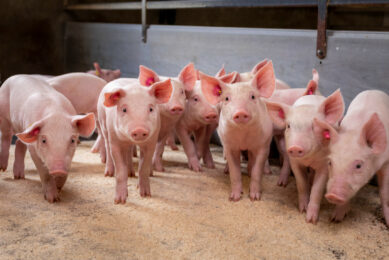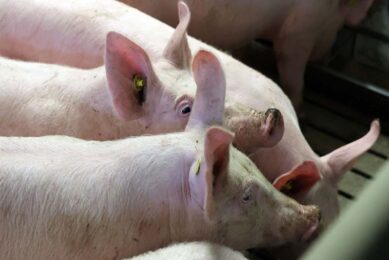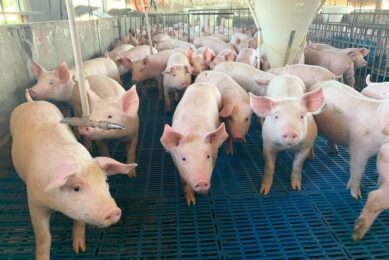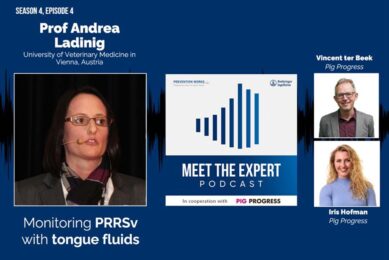Dr Nicolai Rosager Weber: ‘Coordinated efforts key to eliminating PRRS in Denmark’
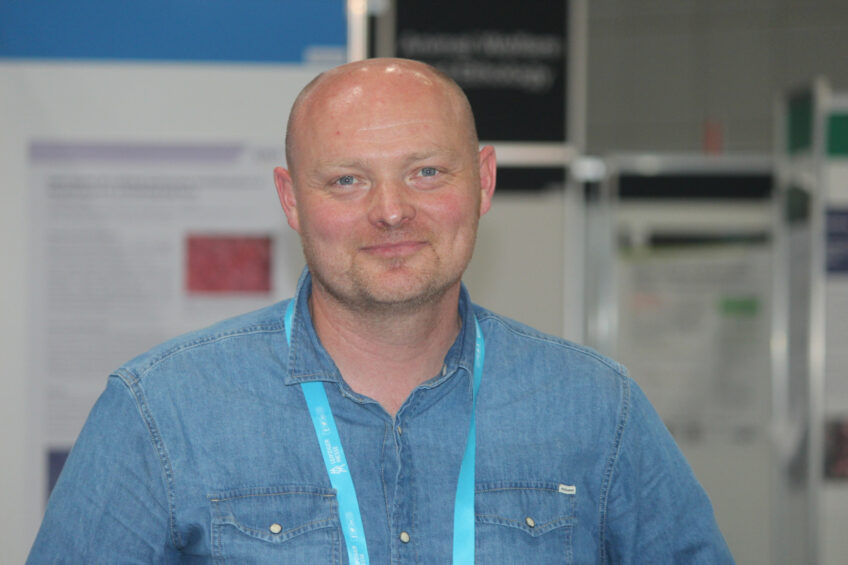
Enough is enough – that is what Denmark’s pig industry thought when PRRS virus kept on being a nagging problem, causing difficulties for the entire production chain. For 2 years now, a strategy has been in place to get a grip on the virus, with the ultimate goal to eradicate it altogether. National project leader Dr Nicolai Rosager Weber explains the strategy in detail.
Since mid 2022, Denmark has embarked on an ambitious programme to get Porcine Reproductive and Respiratory Syndrome (PRRS) virus under control once and for all. The country is using its well-known “Specific-Pathogen-Free” (SPF) strategy for this. Under that system, 80% of all Danish sows are declared free of 7 pathogens, including e.g. Mycoplasma hyopneumoniae and toxin-producing Pasteurella multocida.
It is now mandatory for all Danish pig herds to have a serological PRRS status based on annual blood analyses. In addition, the Danish slaughter companies have decided to make a deduction system resulting in a reduced price for pigs from PRRS virus-positive herds which is an impetus for each farm owner to make sure his/her herd will get free from PRRS as soon as possible.
Dr Nicolai Rosager Weber, employed by the Danish Agriculture & Food Council, is responsible for the overall coordination of the PRRS programme. At the recent edition of the IPVS-ESPHM Congress in Leipzig, Germany, he explained about Denmark’s latest project.
“That is the basis of the whole programme, Denmark is very good for this. It is a matter of geography: the sea is all around us, we have a very short border with Germany, and we do not import live pigs. That is the whole foundation of going for this ambitious goal.”
“SPF is a declaration system, meaning that pigs on these SPF production farms are blood sampled once a year. In breeding herds, this is even once a month. In the lab they are looking at antibody levels, so at the serological status. If samples are negative, then the farms will get a “negative” status. If they are positive, then they get a “positive” status.
“Using serology means that we are looking for antibodies, for a response from the pigs to certain pathogens or to a vaccine. If a pig is seropositive for PRRS antibodies, this means it has met the virus at some point. The pigs can be positive for a long time, at least a few months. So that is also saying something about the history of the pig.” Furthermore, herd owners and veterinarians are obligated to notify the SPF system if they see clinical signs of an SPF disease.
We saw that the prevalence of PRRS-positive farms was increasing in Denmark and we needed to stop this development in prevalence
“There were 4 partners making the strategy together: the Danish Agriculture and Food Council, the Danish Veterinary and Food Administration, the Danish Veterinary Association and the Danish slaughter companies. We needed the farmers to agree with it, at least the vets saying it is a good idea, we needed the authorities to make the rules, and we needed the slaughter companies to come with the whip, with the deduction system to make it all run. They knew that everybody needed to be a part of it to make it all work.”
“We saw that there was a spread to areas with a low prevalence through trade. We saw that the prevalence of PRRS-positive farms was increasing in Denmark and we needed to stop this development in prevalence.
“In addition, in 2019, a boar stud in Denmark was infected with PRRS, which infected a series of sow herds. Due to that, the whole PRRS surveillance system was re-evaluated in Denmark. There had been talk of doing something about the PRRS situation, for so many years. Against that background, all the partners got around the table.”
“Some areas in Denmark make sense. They form an island, or a peninsula, whatever. There is a local community, so it is straightforward to make a region there. And then in other places we tried to look at the maps and made regions of approximately 100 farms. We talked to veterinarians and figured out what made sense. Then we chopped up the country into regions.
“Another key point about these regions is that we need some local PRRS leaders. Local veterinarians and pig advisors to actually run the programme. Every region has a pig practitioner and a pig advisor as local coordinators and the whole programme actually hires them to do that.
“Currently we have 16 regions, and that includes just a bit more than half of the whole Danish pig production. We are establishing new regions this year. So, by the end of the year, 80% of the production will be organised. And then we expect the rest to be organised within a year.
“We have databases with herd information and location, we have a public database of pig movements, and we have a public database of health status. When you have those 3 databases, you can start combining them and putting them into maps. All gathered data are public. Suddenly you have a lot of information that is necessary for farmers and vets at local level to coordinate.”
“No, because we have very good data systems and maps, so we can visualise what is going on. We can show the PRRS status of every farm and how they are trading with each other, and we do some calculations about the neighbourhood and the risk of being infected.”
“The system functions in such a way that all farms they are trading with, for instance finishing producers, will also be declared positive. And then you have a positive system, a positive flow, it is connected.
“Slaughter companies agreed to issue a deduction system. So, if a pig producer finds PRRS virus in his/her finishing barn, then there is a deduction in the price of the pigs at slaughter. If pig producers get punished, they will try to convince the sellers of the weaners to eradicate, and otherwise they will purchase their pigs from somewhere else.”
“To be honest, it surprises me and my colleagues how well the producers have reacted to this thing. A lot of new things are going on and you risk getting a deduction when sending pigs to slaughter, but the reaction has been as we hoped. That producers, instead of complaining, said: “We need to get rid of it.” The experience is that there has been a very good reaction, especially from the producers and because the producers are positive, the veterinarians are also positive.”
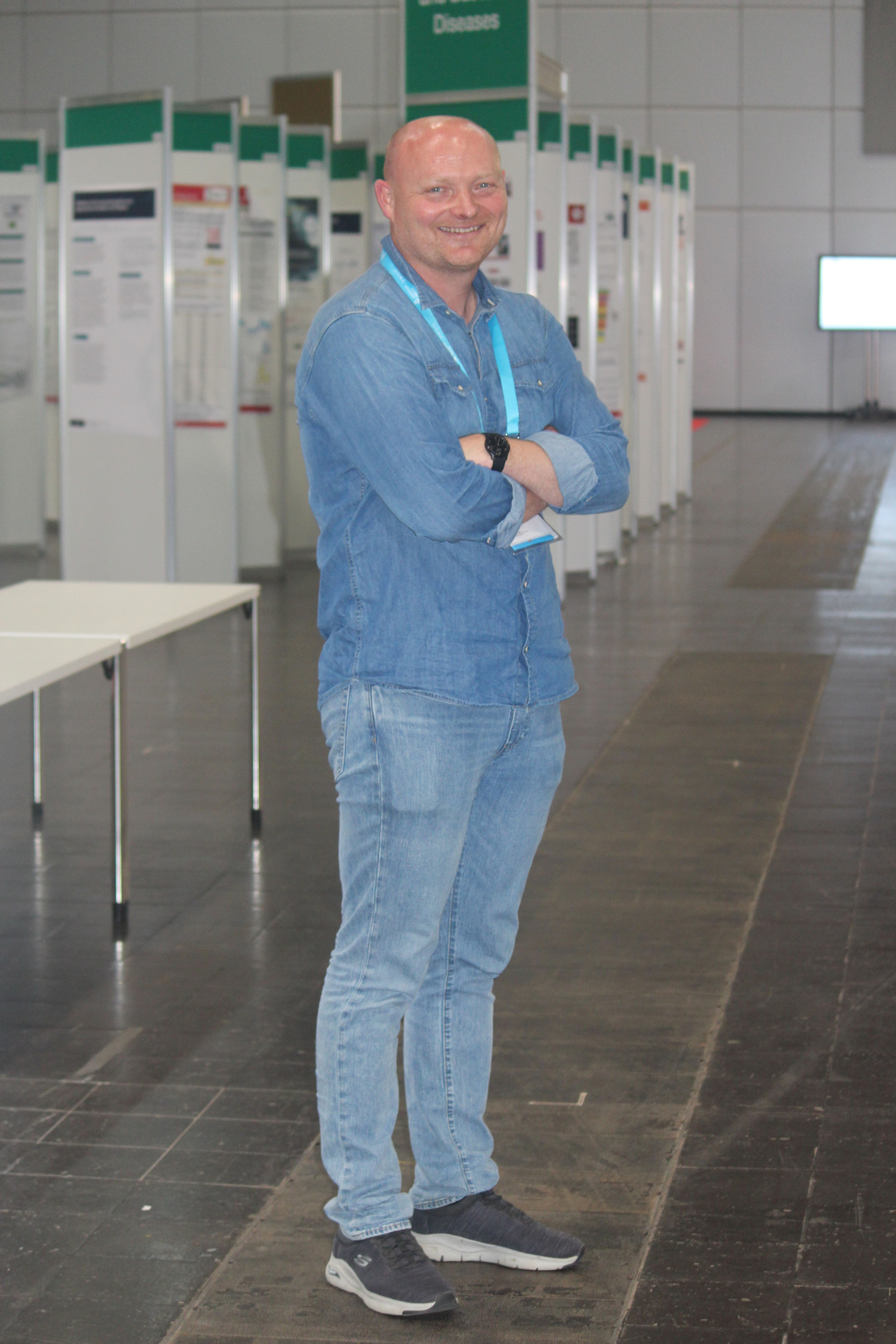 Where are the biggest PRRS problems at the moment?
Where are the biggest PRRS problems at the moment? “It is heavily grouped in the west of Denmark. That means that the islands of Zealand and Funen have a low prevalence of PRRS-positive farms, whereas in Jutland (bordering on Germany, ed.) there are areas where there is a very high prevalence of seropositive herds.”
“In many regions PRRS levels are going down. But there are also some areas we still need a lot of coordination, and that takes time. Every farm needs to develop their own strategy when to do the eradication programme. All the vets need to talk together and figure out what farmer A does and what farmer B farmer C do, and then they will have to execute the plan. In some areas it is easy to execute that plan; in others it is a difficult task.”
“To be honest, no. We are still in the process of learning and gaining an overview of the situation. In this phase, we did not have any bad experiences or bad surprises, so we are being moderately positive.”
We will get to the point when PRRS will virtually be eradicated in the whole of the country, just that last part is missing
“What I find the most interesting is the coordinating work. You have to imagine that veterinarians in Denmark are working for private companies. They are competing with each other for the farmers’ service. Because we all need to eradicate PRRS, we need to have this regional approach. That means that the farmers will have to work together, and they need to tell the veterinarians: “You need to work together, agree upon what to do and come with the right advice for us and then instead of competing they have to work together.” It is very nice to be in the middle of that, trying to make everybody work in the same way.”
“We have 2 targets that they are measuring against. One is the percentage of sero-negative sow herds having to be 85% by 2025. And the other is that the number of sero-negative slaughter pigs needs to be at 75% by 2025.”
“Nobody has written it down but it is obvious. We will get to the point when PRRS will virtually be eradicated in the whole of the country, just that last part is missing. That will be the very difficult part. Probably we will need to have stricter rules to make sure that you also get the last part done.”



